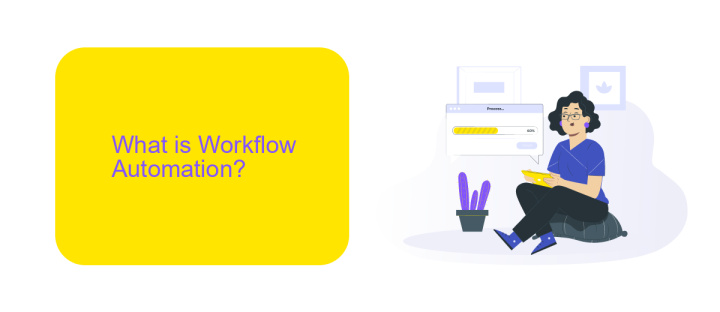Workflow Automation Explanation
Workflow automation is revolutionizing the way businesses operate, streamlining processes to enhance efficiency and productivity. By leveraging advanced technologies, companies can automate repetitive tasks, reduce human error, and free up valuable time for employees to focus on more strategic activities. This article delves into the fundamentals of workflow automation, exploring its benefits, implementation strategies, and the future landscape of automated business processes.
Introduction
Workflow automation is revolutionizing the way businesses operate by streamlining repetitive tasks and processes. This not only saves time but also reduces the likelihood of human error, allowing employees to focus on more strategic activities. By implementing workflow automation, companies can significantly enhance their productivity and efficiency.
- Eliminates manual errors
- Speeds up processes
- Improves task management
- Enhances collaboration
One of the key components of successful workflow automation is the integration of various tools and services. Platforms like ApiX-Drive facilitate seamless integrations, enabling businesses to connect different applications without the need for complex coding. By leveraging such services, organizations can ensure that their automated workflows are both robust and adaptable to changing needs.
What is Workflow Automation?

Workflow automation is the process of using technology to automate a series of tasks or processes, which are otherwise performed manually. This automation can streamline operations, reduce the likelihood of human error, and save valuable time for businesses. By utilizing various tools and software, companies can automate repetitive tasks such as data entry, email responses, and report generation, thereby enhancing overall efficiency and productivity.
One of the key aspects of workflow automation is the integration of different applications and systems to work seamlessly together. Services like ApiX-Drive facilitate these integrations by connecting various platforms, enabling data to flow smoothly between them. This not only simplifies the setup process but also ensures that all systems are updated in real-time. By automating workflows and leveraging tools like ApiX-Drive, businesses can focus more on strategic tasks, leading to better decision-making and improved outcomes.
Benefits of Workflow Automation

Workflow automation offers numerous advantages that can transform the efficiency and productivity of any organization. By automating repetitive tasks, businesses can save valuable time and resources, allowing employees to focus on more strategic activities.
- Increased Efficiency: Automation reduces the time spent on manual tasks, leading to faster completion of projects.
- Cost Savings: By minimizing human errors and reducing labor costs, companies can achieve significant financial savings.
- Improved Accuracy: Automated workflows ensure consistent and error-free task execution, enhancing overall quality.
- Enhanced Collaboration: Tools like ApiX-Drive facilitate seamless integration between different systems, improving team collaboration and data sharing.
- Scalability: Automation allows businesses to easily scale operations without a proportional increase in workload.
Incorporating services like ApiX-Drive can further streamline workflow automation by enabling easy integration of various applications and platforms. This not only simplifies the automation process but also ensures that all systems work harmoniously together, maximizing the benefits of workflow automation.
How to Implement Workflow Automation

Implementing workflow automation can significantly enhance your business efficiency by reducing manual tasks and streamlining processes. To begin, identify the repetitive tasks within your organization that can be automated. These tasks often include data entry, email responses, and routine approvals.
Next, choose a suitable workflow automation tool that fits your needs. Consider factors such as ease of use, integration capabilities, and scalability. Platforms like ApiX-Drive offer robust solutions for integrating various apps and services, making it easier to automate complex workflows without extensive coding knowledge.
- Identify repetitive tasks
- Select a workflow automation tool
- Map out the workflow process
- Test the automation
- Monitor and optimize
Once you have mapped out your workflow process, test the automation to ensure it works as expected. It's crucial to monitor the automated workflows regularly and make necessary adjustments to optimize performance. By following these steps, you can effectively implement workflow automation and drive your business towards greater productivity.
- Automate the work of an online store or landing
- Empower through integration
- Don't spend money on programmers and integrators
- Save time by automating routine tasks
Examples of Workflow Automation
Workflow automation can significantly streamline various business processes. For instance, in the realm of customer relationship management (CRM), automated workflows can handle tasks such as sending follow-up emails, updating customer records, and scheduling appointments. This ensures that no critical step is missed, enhancing customer satisfaction and operational efficiency. Moreover, in project management, automated workflows can assign tasks to team members, set deadlines, and track progress, ensuring that projects are completed on time and within budget.
Another example is the integration of various business applications using services like ApiX-Drive. ApiX-Drive enables seamless data transfer between different platforms without the need for manual intervention. For example, it can automatically sync data from an online store to an accounting system, ensuring that financial records are always up-to-date. This not only saves time but also reduces the risk of human error. By leveraging such tools, businesses can optimize their workflows, leading to improved productivity and accuracy.
FAQ
What is workflow automation?
Why is workflow automation important?
How can I start implementing workflow automation in my business?
What are some common tasks that can be automated?
Can workflow automation be customized to fit my specific business needs?
Time is the most valuable resource for business today. Almost half of it is wasted on routine tasks. Your employees are constantly forced to perform monotonous tasks that are difficult to classify as important and specialized. You can leave everything as it is by hiring additional employees, or you can automate most of the business processes using the ApiX-Drive online connector to get rid of unnecessary time and money expenses once and for all. The choice is yours!


